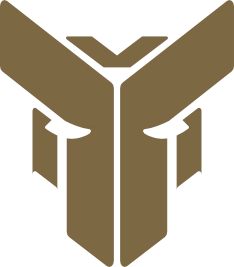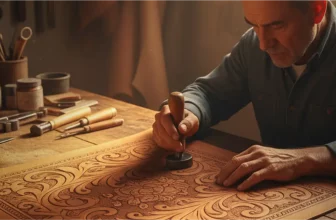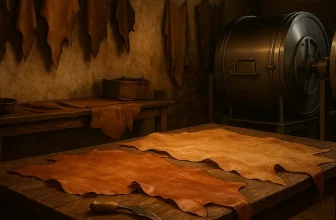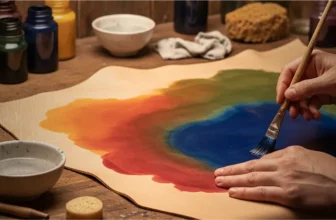
Understanding how leather is made helps consumers appreciate the craftsmanship behind leather goods and make more informed buying decisions. Leather production is a complex, multi-stage process that begins with raw hides and ends with high-quality, durable products like shoes, bags, belts, and wallets. This article outlines the complete natural leather production process and highlights the differences between vegetable tanned leather and chrome tanned leather, helping you choose the right products for your needs. By learning about these methods, you can better evaluate quality, sustainability, and long-term value in leather goods.
Learn more about leather and make better choices:
1.Raw Hide Collection and Preparation:
1.1 Hide Collection
The first step in the leather-making process is the careful collection of animal hides, most commonly from cattle, sheep, or goats. The health and treatment of these animals directly affect hide quality.
Hides are removed immediately after slaughter to prevent decomposition.
Collected hides are stored in cool, moist environments or preserved using salting techniques to avoid spoilage.
1.2 Cleaning and Preparing for Tanning:
Before tanning can begin, the hides must be cleaned and prepared:
The hides are washed with water and mild chemicals to remove blood, hair, and excess fats.
They are then cooled or refrigerated to preserve them until the tanning phase begins.
2.Tanning Process:
One of the most critical stages in how leather is made is the tanning process, which transforms raw hides into durable and flexible leather. Two main tanning methods are used: chrome tanning and vegetable tanning.
2.1 Chrome Tanning:
This modern method uses chromium salts to tan hides quickly and efficiently.
Hides are soaked in chrome solutions that deeply penetrate the material.
The process is relatively fast (a few hours to days), making it ideal for mass production.
Chrome tanned leather is soft, flexible, and highly durable.
It accepts dyes easily, allowing for a wide range of vibrant colors.
Advantages of chrome tanned leather include better resistance to water and wear, making it perfect for fashion and industrial leather goods.
2.2 Vegetable Tanning:
Vegetable tanned leather is produced using natural tannins from tree bark, leaves, and other plant materials. This traditional method is more time-intensive:
Hides are immersed in tannin-rich baths for several weeks.
The process results in firmer leather with a natural aroma and distinct aging properties.
Vegetable-tanned leather develops a rich patina over time and is often used for artisanal products.
When comparing vegetable tanned leather vs chrome tanned leather, the choice depends on the intended use. For eco-friendly, long-lasting items, vegetable tanning is ideal. For flexibility and color variety, chrome tanning may be preferred.
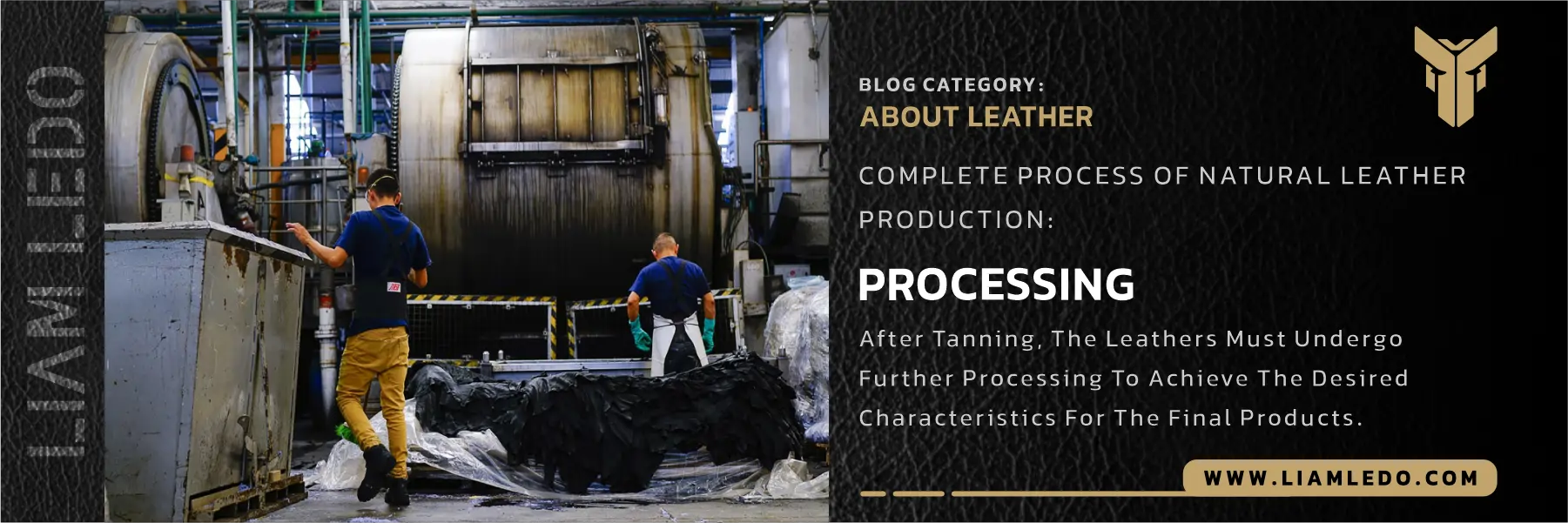
3.Post-Tanning Processing:
After tanning, the leather undergoes several finishing steps to prepare it for consumer use.
3.1 Dyeing:
Dyeing enhances leather’s appearance and adds value to the final product.
Base dyeing involves soaking the leather in liquid dyes that evenly color the surface and interior.
Advanced techniques such as printing and embossing can create patterns, textures, or branding marks.
This stage is critical for brands offering buy vegetable tanned leather products, as natural dyes and finishes are in high demand for sustainable fashion.
3.2 Finishing and Conditioning:
To improve texture and appearance, leather surfaces are refined:
Buffing and polishing smooth out imperfections.
Oils, waxes, or synthetic coatings are applied to enhance shine, softness, and resistance to wear.
A final inspection ensures consistent quality across all processed hides.
4.Cutting and Product Manufacturing:
After finishing, the leather is transformed into various consumer goods.
4.1 Leather Cutting:
The processed leather is cut into specific patterns and sizes depending on the product being made:
Bags, belts, shoes, and accessories are shaped using manual or laser-cutting tools.
Precision in cutting ensures minimal waste and high-quality results.
Cutting quality plays a major role in the durability of leather goods, especially in luxury and handmade markets.
4.2 Stitching and Assembly:
The cut leather pieces are assembled into final products:
Industrial sewing machines are used for accurate, strong stitching.
In some cases, hand-stitching adds aesthetic and artisanal value.
Final touches like trimming, edge polishing, and hardware attachment are added before packaging.
5.Packaging and Distribution:
The final stage of the leather production process involves packaging and shipping finished products to consumers or retailers.
5.1 Packaging:
High-end leather products require careful packaging to preserve quality:
Protective materials like cloth bags, boxes, and foam inserts are commonly used.
Packaging includes care instructions and product labels.
5.2 Shipping and Quality Control:
Products are shipped globally via trusted logistics providers.
Quality control teams inspect products for flaws before dispatch.
Tracking systems ensure timely and secure delivery.
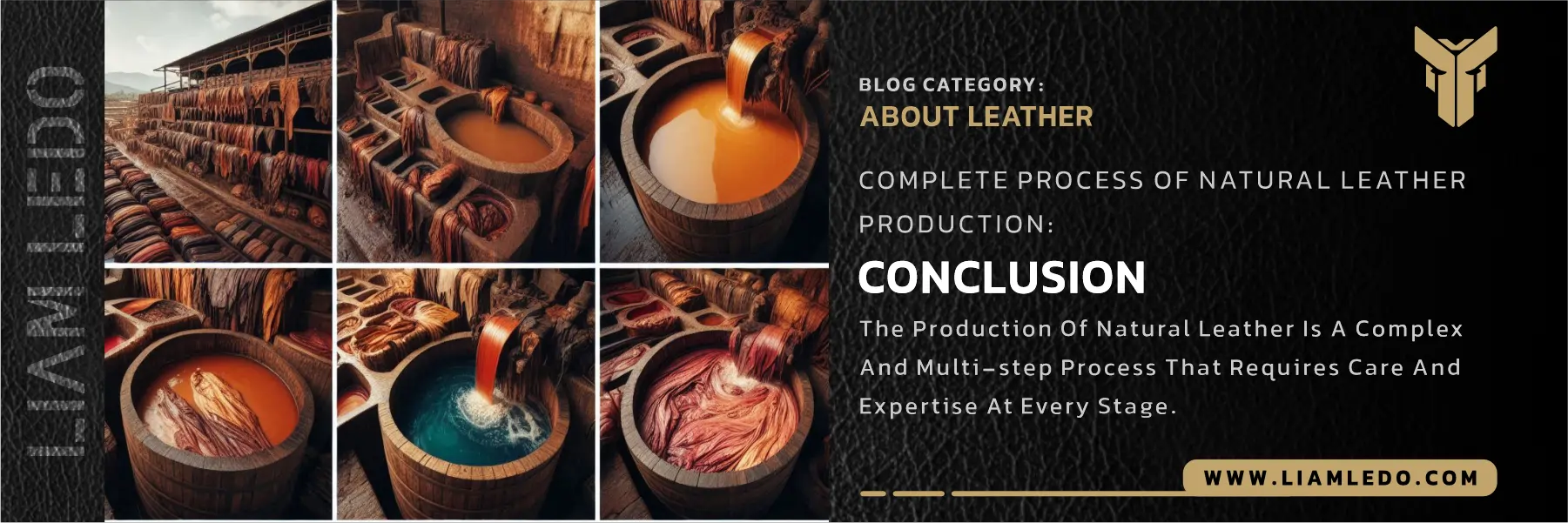
Conclusion:
Learning how leather is made offers insight into the intricate craftsmanship and processes behind natural leather products. From raw hide collection to tanning, dyeing, cutting, and final assembly, each step plays a vital role in ensuring the quality and durability of the end product. Understanding these stages also helps consumers recognize the value of genuine leather and make more mindful purchasing decisions.
Whether you’re interested in buying vegetable tanned leather products or comparing vegetable tanned leather vs chrome tanned leather, understanding the production process helps you make more informed choices. Natural leather, when produced with care and expertise, offers unmatched aesthetics, longevity, and sustainability—qualities that discerning consumers increasingly seek.
Source: The Gentleman’s Gazette | Wikipedia
